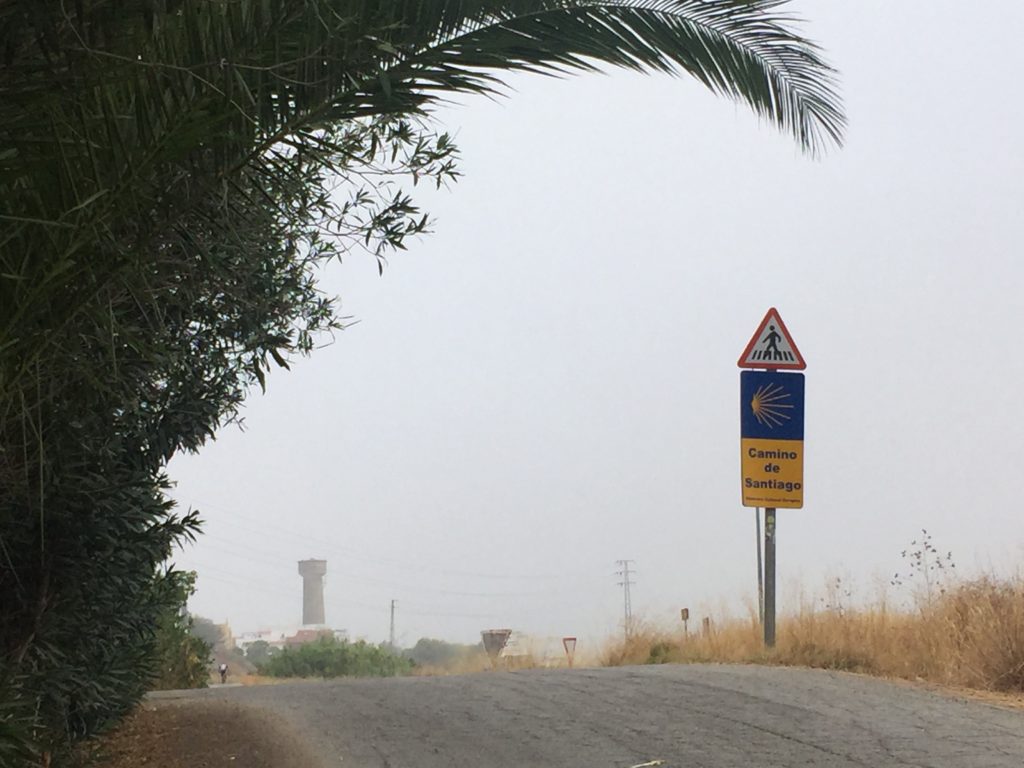
I once heard a veteran Italian walker speaking in his native tongue about his experiences on the Via de la Plata, one of the longest but least travelled pilgrim paths in Spain. Though my command of Italian was limited to phrases picked up from The Sopranos, I could still understand the bleak and desolate picture he painted of one of his many pilgrimages to Santiago. One word stood out when he described the landscape: nada – nothing. It sounded like he had spent days if not weeks in the desert, with neither a fellow human nor beast to keep him company, or without even a tree or a bump in the road to break up the monotony of the landscape. This sounded like a tough and rugged endurance test, a modern pioneer trail of sorts, where only the most stubborn and determined would survive. I was intrigued.
The Camino de Santiago has experienced a huge surge in popularity since the turn of the 21st century, with more than 300,000 people walking at least the last 100 KM per year. By far the most popular path is the Camino Francés, which has now become synonymous with the Camino de Santiago itself. A whole industry has developed around it, so much that it may have become oversubscribed and lost some of the essential ingredients of a true journey of the soul. But there are many other routes that one can follow, where the real spirit of pilgrimage can still be felt in the 21st century. The Via de la Plata is one of those routes. It runs from Seville in the south of Spain, through the isolated region of Extremadura, across the expansive plains of Castilla Y Leon, and over the mountains into Galicia, where it leads to the city of Santiago de Compostela, the final destination of all the caminos, and the resting place of the apostle Saint James.
Known as the silver route, the Via de la Plata follows an old Roman road towards metal mines in the north of the country, but the path’s name is believed to have either come from the Latin for wide road, ‘platea’, or stone road, ‘lapidata’, and it has no connection with silver. It is also believed its name may have been derived from the Arabic ‘balatta’, which simply means road. It is 1,000 KM in length, traverses parts of the Iberian peninsula where few people currently reside, offers limited lodgings and places to buy supplies, and subjects walkers to extremes of weather, ranging from intense heat to semi Siberian cold, and from drought to apocalyptic levels of rain. On this long and lonely road it is not unusual to walk for hours without seeing another living soul. Finding sources of water in some of the desertlike regions could be as difficult as, well, finding water in a desert. Few people attempt to tackle the Via de la Plata, with only one in every 30 pilgrims who arrive in Santiago doing so by walking that path. The Via de la Plata is an extreme act of endurance, hardship, masochism, and insanity. Having taken on several of the other caminos and lived to tell the tale I needed to push myself that bit further and farther. The silver route sounded like it was the perfect match for me.
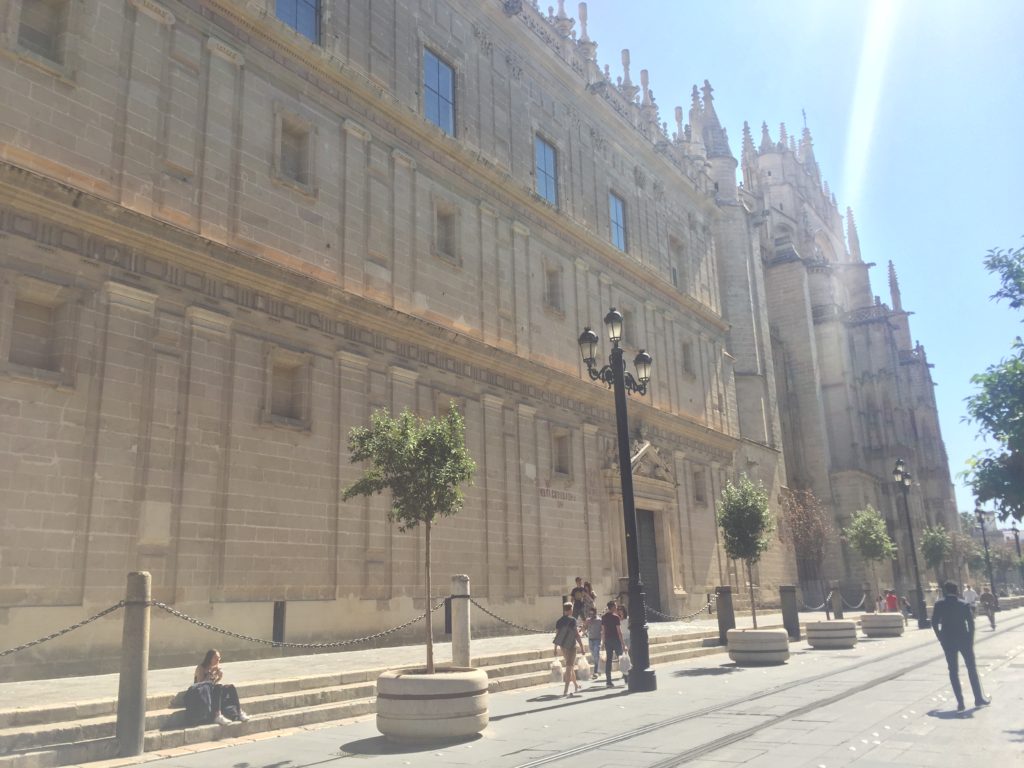
It’s a bit of a cliche to say that each camino begins in the heart and mind of the pilgrim who walks it, but for the sake of brevity let’s just agree that the Via de la Plata begins at the enormous cathedral in Seville. One of the largest in the world, and the final resting place of Christopher Columbus, this cathedral is the crown jewel in the rich architectural and cultural heritage of Spain’s sun-drenched Moorish metropolis. Seville’s eclectic architecture reflects the wealth that was generated from Spain’s “discovery” of the New World 500 years ago, as well as the country’s older Islamic past. This is heart of Andalucia, the land of bullfighting, guitars and flamenco – a fiery, warm and passionate dance that reflects both the climate and the temperament of the people. When we conjure up images of Spain it is Andalucia of which we think.
Spain’s deep south can be an inferno in the summer, with temperatures often exceeding 40 degrees. For those brave enough to battle the outdoors in such conditions it can feel as if a fireball is about to come charging around the corner and sweep away all in its path. This is one of the primary reasons why few people walk the Via de la Plata, and it was one of the main reservations I had about doing it. I had endured some days of heat while walking in Portugal, which were as unpleasant as a root canal treatment or a case of head lice, or both at the same time. I wasn’t rushing to repeat that experience. I had also walked in unimaginable rain, with little sleep, blisters, food and water shortages, plantar fasciitas, an ingrowing toenail and a broken heart. Sometimes all at the same time. And in all cases I survived. Although I was intending to begin this journey in late September, when autumnal climes are more agreeable, the Spanish sun could still be pretty unforgiving. But if we wait for conditions to be perfect we could be waiting forever. Autumn was as good a time as any, so I decided to through caution to the wind and get on with it.
With the towering edifice of Seville’s cathedral serving as the opening backdrop it was safe to conclude that the forthcoming journey would indeed be an epic one. The path from the cathedral runs along some of Seville’s charming cobble stoned side streets, lined with colourful balconied buildings, across the majestic Rio Guadalquivir, and through its suburban outreaches, until we reach the farmlands beyond. Very soon we have left the big smoke behind and it feels like we’re in the middle of nowhere. Welcome to the real Spain.
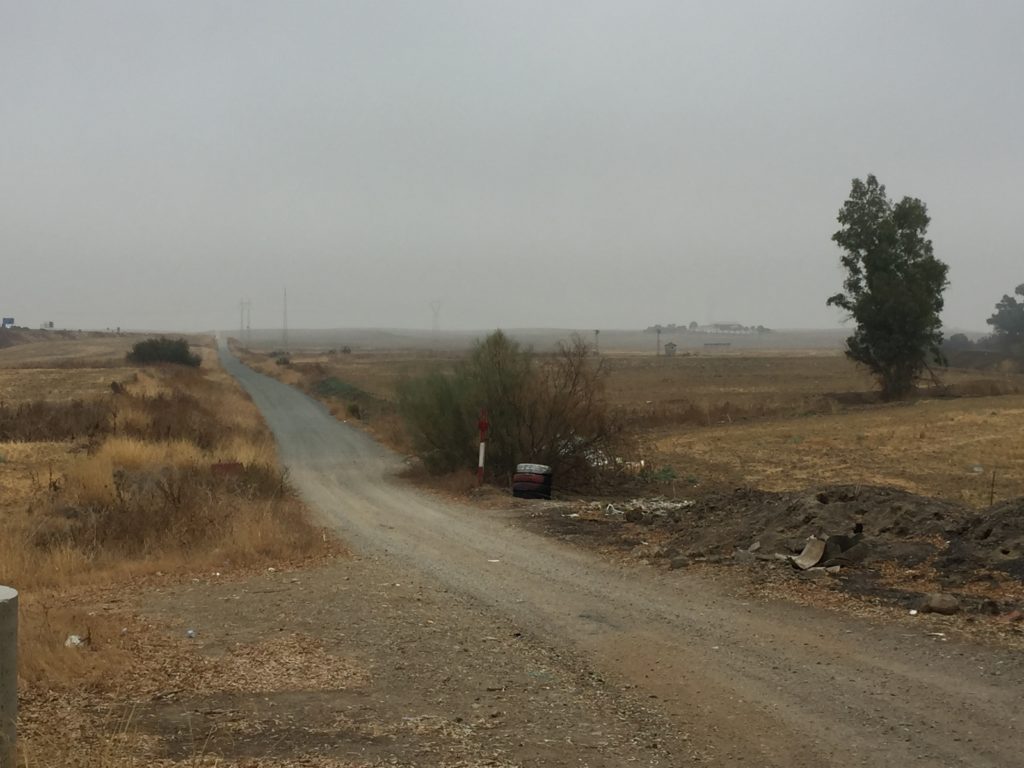
All journeys seem daunting at the outset. When your destination is 1,000 KM away, and you have to walk through unknown lands to get there, it is easy to feel overwhelmed. But I had chosen to do this, in no small part because of the immensity of it. Any pilgrimage has to have a degree of difficulty built in. It must be an occasion for the pilgrim to dig deep within themselves to find the strength of body and mind to complete the journey. There are no rewards to be gained by doing something that is easy. I needed to remain focused not on my distant destination but at the point of the journey I was presently on. You don’t get to where you’re going in one giant step but through a series of small steps, each one of which is no more or less important than any other. That monumental figure of 1,000 KM would be gradually whittled away in the days and weeks to come, but those days and weeks are what would make the journey worthwhile.
The camino doesn’t always give you what you want, but it does give you what you need, even if that doesn’t always come in the form you’d expect or welcome. However, sometimes it does give you just what you want, and on day one I wanted favourable climatic conditions. As I set out upon the road from Seville, a fog hung over the city making the temperatures very hospitable for a good stretch of the leg. The scorched fields beyond Seville are testament to the vicious heat this part of the world endures, but strolling through the Andalucian landscape, complete with its sleepy whitewashed villages, olive groves, cactus trees, cotton fields and cork oak forests, shows that life thrives even in the harshest environments. The paths on that first day wandered through quiet empty farmlands. Save for an occasional car, cyclist or fellow pilgrim, this was vastly desolate terrain. This would be the trend for the weeks that followed. On the more limited occasions where the camino followed a road it was normally one where only the odd car was encountered. That’s bad if you needed a lift, but good if you wanted to immerse yourself in the solitary experience of pilgrimage. Most of the time the silver route’s paths were paved with dirt not tarmac. For a pilgrim that’s as good as if they were paved with gold.
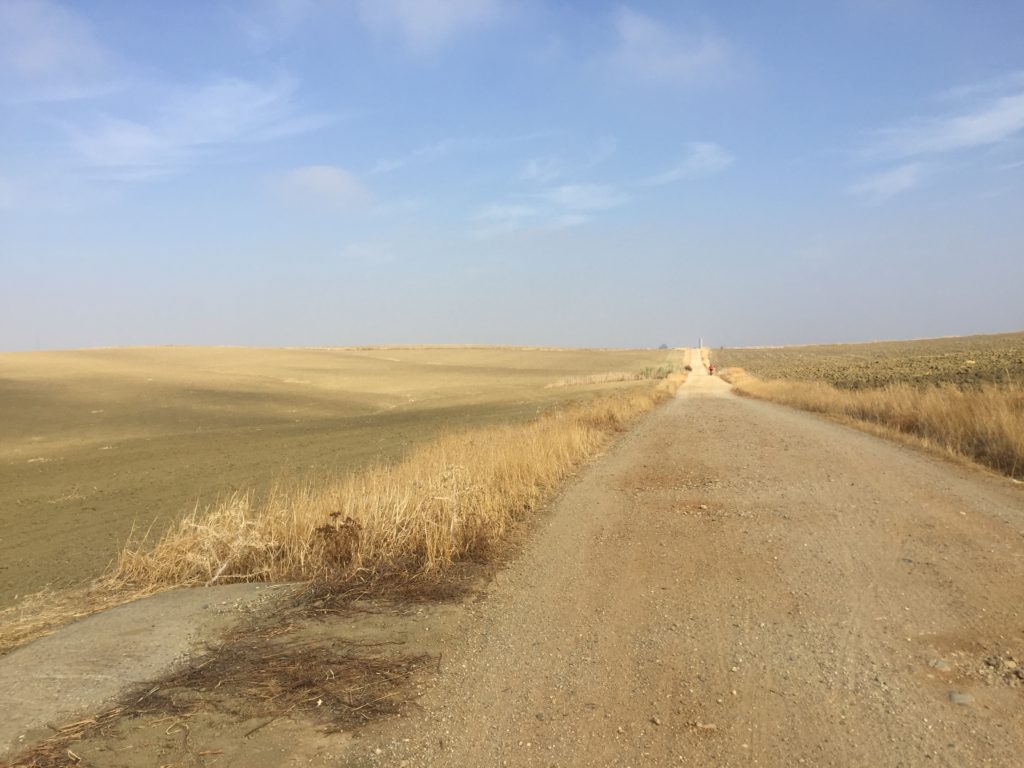
A small selection of pretty little towns and villages dot the route as the Via de la Plata heads north from Seville. Guillena, Castileblanco and Almaden de la Plata were the places I stayed in on the first three nights, though there wasn’t really much choice. On the Camino Francés you nearly always have the option to go 5 KM further or less, and an enterprising local normally has a cafe at a convenient spot for those who need their caffeine fix somewhere along their daily walk. Such luxuries are conspicuously absent on the Via de la Plata. If you don’t like the town you’ve stopped in it may be another 30 KM to the next one. If you’re lucky you’ll find a water tap along the way. The comfortable 20-25 KM days that are the norm on the Francés are more of a luxury on this route. Early on you realise you may have to get comfortable with 30-35 KM days, and maybe even more than that. The word ‘comfortable’, of course, has on a different meaning on the Via de la Plata.
The picturesque towns are models of Spanish living: relaxed, laidback, carefree, and governed by the Iberian philosophy of ‘no pasa nada’, or ‘don’t worry about it’. Whatever happens in Spain, nobody gets very excited. “There’s been a nuclear explosion – no pasa nada.” Those with a Germanic disposition are guaranteed to get frustrated. Shopping for basic provisions in small town Spain requires endless reserves of patience. Shops rarely employ more than one person, and in addition to working the till, stocking the shelves, serving at the meat counter and in the bakery, that employee also has to engage in ten minutes of local gossip with everyone who comes through the door. Buying bread is especially arduous and complicated. I often found myself being chastised for bringing a baguette to a checkout only to be told it was not for sale. However, I was informed if I wanted I could purchase the identical loaf that was next to it on the shelf. String theory isn’t quite so baffling. Then you have to contend with the logic of Spanish time. Businesses open during business hours, but when those are is a mystery of which only a secret few are aware. And trying to get a meal before bedtime is even more challenging than buying a loaf of bread. There was many a day I wandered ravenous into every cafe and restaurant I encountered looking to eat anything that resembled food, yet hearing they didn’t start serving till 9 PM. I would have gone to the local shop to fill up on bread instead, but that posed its own set of problems. Those feral cats racing about often looked very appetising. Such was the life of a pilgrim.
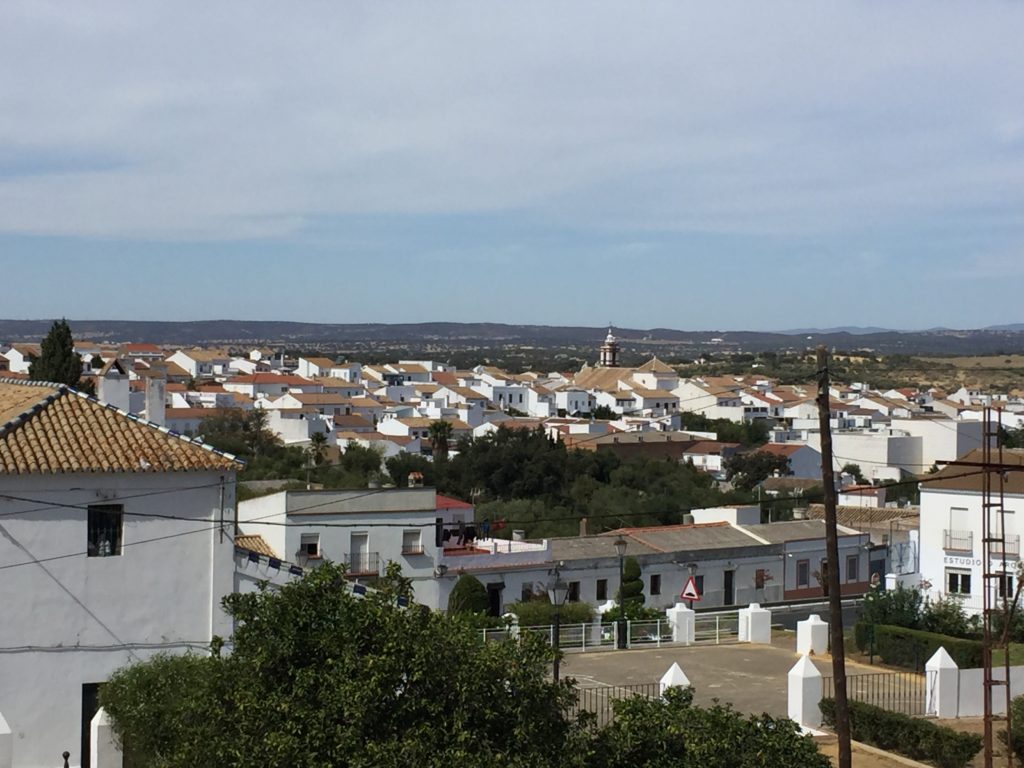
The albergues in the Andalucian towns, by contrast, were mercifully user friendly, comfortable and welcoming, and it was there I had a chance to meet with the other crazy people who were following the same path. It was soon clear that there were few camino virgins on the Via de la Plata. Most had at least one camino under their belt. Many had more than one. With four to my name I felt I could hold my own with the best of them, though I was to meet some people whose camino achievements would put mine and everyone else’s to shame. Bonds of friendship quickly developed among the fellow travellers, and we shared war stories and food supplies during the long lazy afternoons in sleepy small town Spain. These friendships are the essence of the camino. The condition of one’s feet, not normally a topic discussed in polite company, is a common source of bonding among fellow pilgrims. Though most were veterans, we still nursed aches, pains and blisters as we built ourselves back up to camino levels of fitness. The length of time it took to find one’s camino legs varied from person to person, and so some progressed faster than others. I was lucky to find my feet very quickly, and I was able to complete those early days in Andalucia without any major issues. However, some of my fellow travellers were not so fortunate to stay injury free, and hence our paths diverged. Camino friendships can last for just one dinner, one day or for a lifetime, but they all create an enduring impression. Everyone you meet on the camino has some gift to offer, some pearl of wisdom to share, or some story to tell – even the one’s who annoy you.
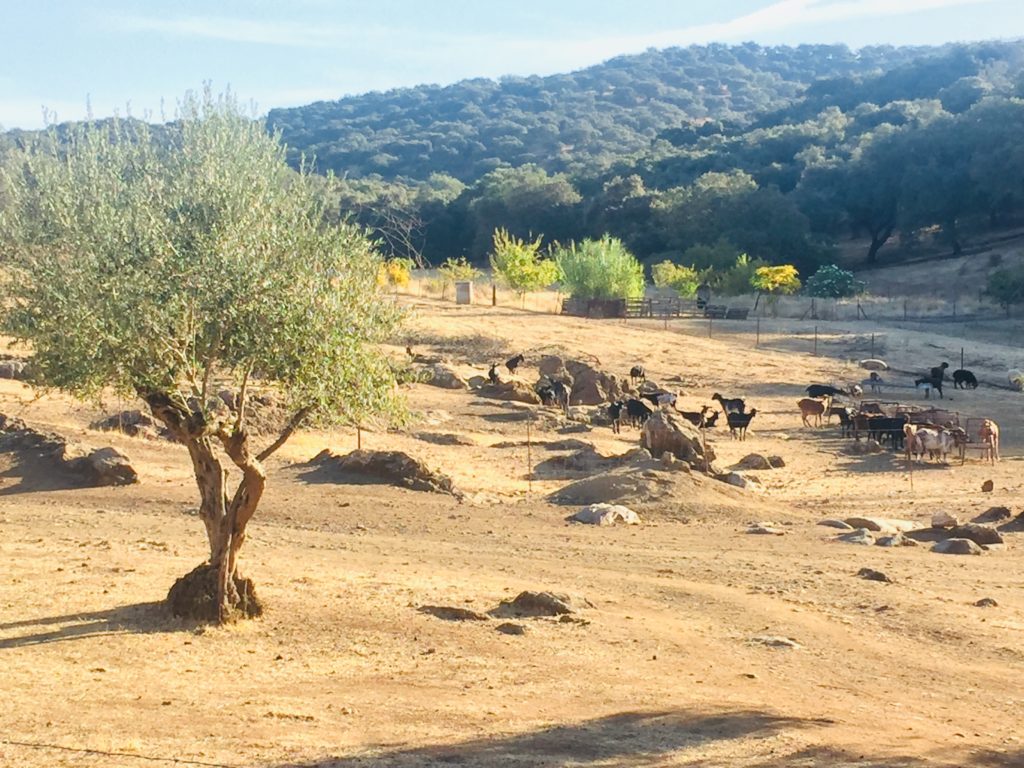
In October throughout the west of Spain, the sun rarely rises before 9 AM. We have Franco to thank for that. In order to cozy up to Hitler he decided to put Spain on central European time in 1942, despite the fact that the majority of the country lies west of the Meridian. Those late sunrises afforded the pilgrim the chance to get many kilometres under their belt while the temperatures were still cool. Early mornings in rural Spain were quiet, calm and very still. The crowing of cocks was the only thing to disturb the silence, and the beauty of the Spanish landscape was illuminated in a spectrum of different colours as the sun crept up from the eastern horizon and ascended higher in the sky. The rolling arid countryside, punctuated by herds of goats, pig farms, clusters of cork oaks and dry river beds, provided a blissful and hypnotic backdrop to my journey. I had been worried that the Via de la Plata would be a monotonous and tedious journey, but virtually every step I took, and every sight I saw disavowed me of that notion.
Day four presented a milestone as it was my final day in the ancient Moorish kingdom of Al Andalus. It was also the day I would complete the first 100 KM. My last stop in Andalucia was a village called El Real de la Jara. This was another scenic little town, where friendly locals smiled and wished you well as you passed through. I even managed to buy some bread there without being subjected to the Spanish Inquisition. Then, as I neared the end of the main street, a benign looking dog took a sudden dislike to me, lunged at me ferociously and tried to snap at my heals. His owner nonchalantly said he didn’t like my walking sticks. She didn’t seem particularly bothered that he was about to take a chunk out of my leg and end my journey right there. “No pasa nada.” I managed to shoo that evil hound from my path and escaped the encounter with no more than bite marks on my lower pants leg, but it wasn’t fun. Up to that point all the omens were pointing at a good camino. A temper tantrum from a dog wasn’t going to hinder me on my journey, but it did hit home the message that the path ahead might not always be smooth and safe. And what was coming up ahead was what had been terrifying me most about the Via de la Plata.
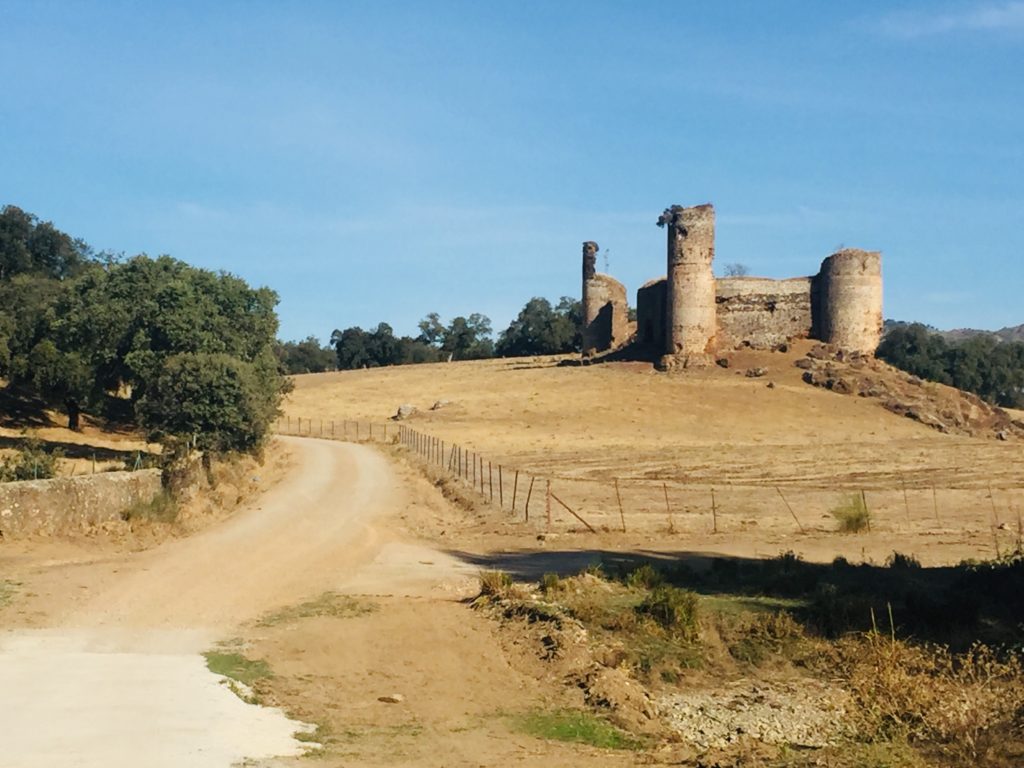
Extremadura is one of the poorest regions in Spain and Europe. Historically, it was ever thus. Its name translates as extra hard, and many of the conquistadores left this harsh and impoverished land in the 16th century to seek their fortunes in the New World. A landlocked province, located in the netherworld between Madrid and Portugal, this is one of the least densely populated regions of Spain. I was anticipating a dusty, barren landscape, devoid of people, buildings and vegetation. It would take me about 12 days to cross this land where the sun could be punishing, albergues could be scarce, supplies might be limited, and there may well be a fair share of pilgrim hating mutts among the other natural dangers. About ten minutes after my battle with the brutish Andalucian dog, I reached the border of Extremadura. A ruined castle stood on the hill to my right, while the road twisted off to the left. I paused to contemplate what lay ahead, took a deep breath, then took that vital first step and crossed the frontier. I was heading into the great unknown. The real challenge of the Via de la Plata was about to begin.
To be continued ….
Thoroughly enjoyed reading about day one on this route, thanks John. Hope you’re keeping well.
An excellent and detailed description – thank you.
I’ve completed three caminos so far but still dream of the challenge of the full VdlP. I was planning at the least to walk the Zamarono-Portugues at the end of May but like so many thousands of others I have to be patient!
I think my biggest frustration is that for each camino I have done my utmost to improve my Spanish, however have found that I rarely use it, instead conversing in German, French and English!
Dear John,
What a wonderful set of descriptions. I particularity liked “Camino friendships can last for just one dinner, one day or for a lifetime, but they all create an enduring impression. Everyone you meet on the camino has some gift to offer, some pearl of wisdom to share, or some story to tell – even the one’s who annoy you.”
I look forward to reading Part II and more …
Thanks, and ultreia …
Thanks for your comments, Peter. It might be a while before any of us can go travelling again, but we can all share our stories of past adventures in the meantime.
Hi John, have just finished reading this ( for the third time) really great read, entertaining and informative. I’ve just seen that part two is also here, I’m eagerly looking forward to reading it!
Thanks for taking your time to post such a great read